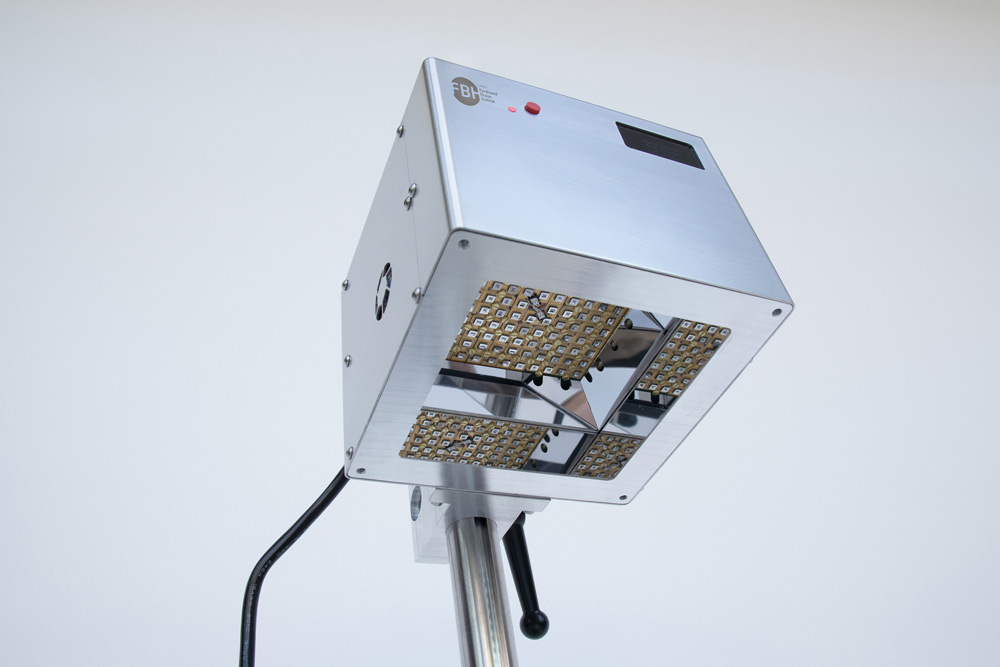News: LEDs
29 March 2021
FBH presenting UV LEDs developments at ICULTA
Ferdinand-Braun-Institut, Leibniz-Institut für Höchstfrequenztechnik (FBH) of Berlin, Germany is presenting current developments and results at the ‘International Conference on UV LED Technologies & Applications (ICULTA 2021, being held virtually on 19-20 April).
FBH is participating with an invited talk ‘Understanding the degradation mechanisms of UVB and UVC LEDs to improve their reliability’ by Johannes Glaab, plus showcases presenting its portfolio at the accompanying exhibition. The range extends from customized LEDs to ready-to-use prototypes that can be used for applications like surface disinfection. In particular, FBH reports important progress in the reliability of UVB and UVC LEDs.
Improved reliability of UVB and UVC LEDs
Up to now, the lifetime of state-of-the-art UVB and UVC LEDs has been limited to several thousand hours. At ICULTA, FBH is presenting a new understanding of the degradation processes of UV LEDs. The degradation behavior was analyzed under various operating conditions, for different LED designs and material compositions. Based on the knowledge gained, FBH has derived a model for the physical degradation processes of UV LEDs.
In collaboration with TU Berlin, FBH has increased the lifetime of UVB LEDs and certain UVC LEDs to more than 10,000 hours – a key milestone for ensuring that the devices can be used in future commercial products. Together with its partner, FBH offers customized UV LEDs with specific wavelengths in the UVB and UVC spectral range. The portfolio also comprises customized packages that, for example, have monolithically integrated ESD protection or are equipped with micro-optics to adjust the emission angle.
UV LED emitters to fight pathogens – from surfaces to human skin
Since UVC light inactivates viruses, bacteria and fungi, FBH is developing the required LEDs jointly with TU Berlin, covering the entire value chain from semiconductor technology to ready-to-use prototypes. With its LEDs emitting in the far-UVC spectral range at 233nm, the partners are world leaders, it is reckoned. Light of this wavelength offers the advantage that it barely penetrates the living layers of the skin, and is therefore suitable for human exposure.
FBH has meanwhile developed and manufactured several UV LED irradiation systems using 233nm LEDs. These are being tested in medical studies at the Charité - Universitätsmedizin Berlin and the Universitätsmedizin Greifswald. An array of 120 LEDs is integrated into each of the systems on an area of 8cm x 8cm. This achieves a maximum irradiance of 0.17mW/cm2 with more than 90% uniformity over an area of 6cm x 6cm.

Picture: Prototype UVC LED irradiation system to fight multi-drug-resistant pathogens using 120 LEDs - suitable for application to the skin.
Another prototype using 265nm LEDs was specifically developed to disinfect everyday objects such as mobile phones and reusable masks. The demonstrator comprises 128 LEDs that irradiate the respective object, which lies on a UV-transparent glass pane, from both sides. The average irradiance is more than 1mW/cm2.
FBH presents UV LED chip and module developments at ICULTA-2018









